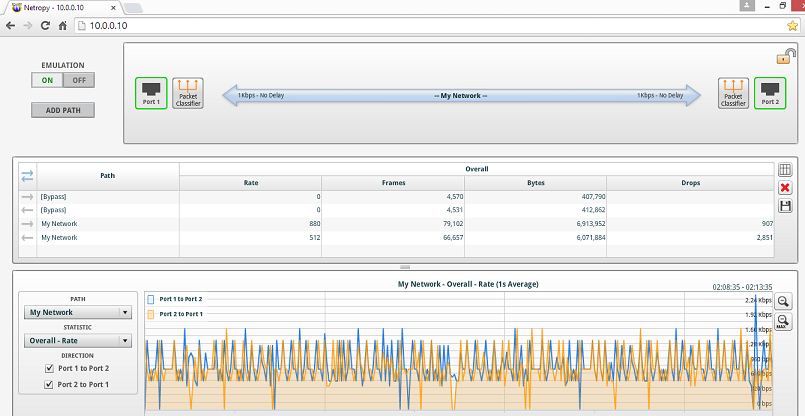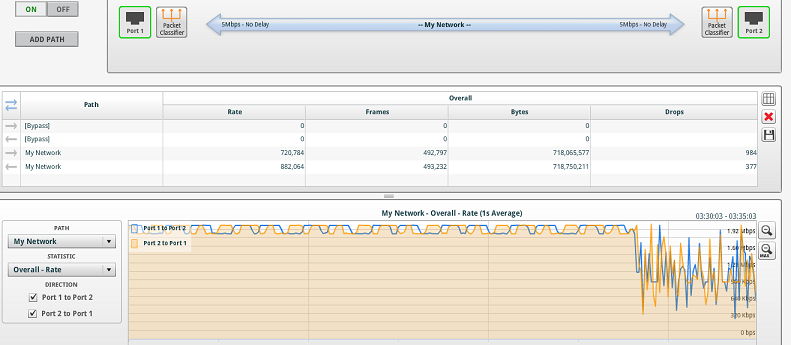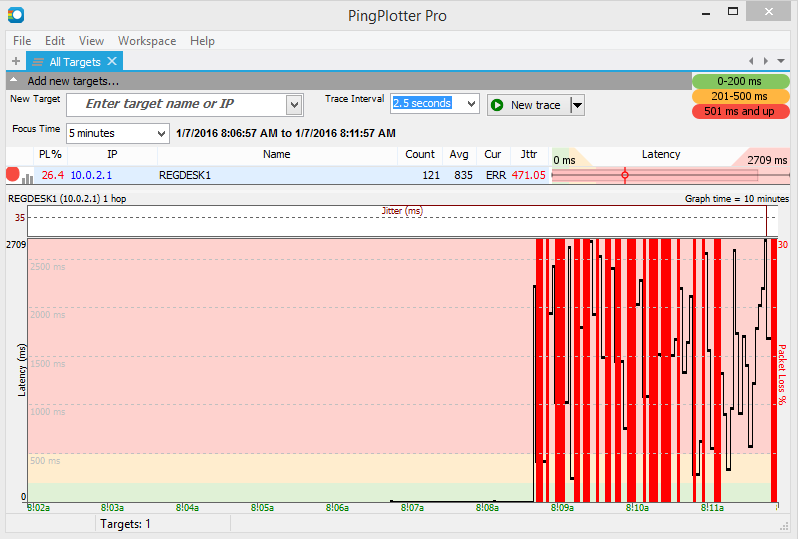Many organizations today comprise several offices of various sizes in disparate parts of the country and the world, and these offices are typically interconnected using WAN links obtained from telecommunication outfits.
So, how does one go about making sure applications that work smoothly over a LAN, also work within acceptable limits over WAN lines? Enter WAN emulators, such as those from Apposite Technologies (News - Alert). Apposite makes network emulator appliances that can be utilized to simulate a variety of WAN conditions for testing network infrastructure and applications.
Apposite's two main lines of products are Linktropy and Netropy. While Linktropy is used to simulate one WAN link, Netropy can simulate up to 15 different WAN links (paths), allowing for more robust and realistic tests for larger organizations.
The Netropy N61 contains one emulation engine between the two available ports. To utilize the emulated WAN links (paths), packets can be assigned to different links by IP address, range, VLAN, or other packet identifiers.

The Netropy N61
Installation
The Netropy N61 is a 1U tall appliance, so rack installation is simple and painless. Starting the appliance was as easy as plugging it in to a power outlet. The Netropy N61 provides two methods of management. The first is through a CONSOLE port, using a null modem and SSH terminal. The more modern way is via the MGMT Ethernet auto-sense/auto-negotiate port, which can be connected to the network port of a laptop. Once the laptop is configured for the same network address as the one pre-configured on the appliance, the GUI management program can be accessed over a browser.
Documentation
The appliance was shipped with a quick start guide card, which we found quite useful to get us started. The product overview, hardware, and user's guide are available as PDF files online. The user’s guide is also available from the N61’s GUI interface. We found all documentation up-to-date and very comprehensive. Apposite’s website (www.apposite-tech.com) also provides a demo video for the product, as well as a guide to compare various Netropy models.
Testing
We set up two simple networks with host1 and host2 using the same subnet and connected them to port 1 and port 2 of the N61 respectively. We started an infinite ping between the hosts and observed that packets were traveling without delay.
Next, we added a path (emulated WAN) by changing various parameters to simulate real-world conditions and observing the effects on the traffic. For traffic generation, we mainly utilized the ICMP ping protocol and FTP file transfer.
In one test, we started the FTP file transfer with the path bandwidth at 10Mbps and suddenly changed the bandwidth to 1Kbps. This caused an immediate packet loss situation and network sluggishness.

In another test, we introduced random background traffic of 50 percent using the background utilization feature of the N61 and observed commensurate packet loss and slowness as well.

Continuing with our tests, we introduced various forms of delay of 50-500 ms to emulate latency and jitter. We observed rising packet losses as we increased delay time. We also simulated packet loss of various kinds (random, burst, and periodic) and various values and verified instant loss of packets and network delay.
To measure packet loss and bandwidth utilization, we also used other network diagnostics applications such as PingPlotter and WinMTR. The figures below show some of the results that we captured during our emulation tests.


The N61 has many more configuration options to fine-tune the path, and we were able to test and verify the functions of some of these additional settings.
As previously mentioned, N61 is capable of supporting 15 separate emulated WANs. To do that, packets can be classified using a variety of methods, such as IPv4 or IPv6 addresses, VLAN, MPLS, MAC address, and IP/port combinations. We used the first method of IPv4 classification to establish a new path and were able to verify its operation alongside our original path.
One of the extremely useful features of Netropy emulators is the ability to simulate real network conditions using a previously recorded network session. To achieve this goal, the operator uses the Netropy Recorder utility on a Windows or Linux host and saves a snapshot of the network activity to a recording file, which can also be altered manually. At a later time, the file can be loaded into a Netropy emulator via the GUI for playback within a path.
The figure below shows the recording of a network session in our labs over a period of time. We then saved the session as a recording file and successfully loaded it into the N61 for playback.
Ease of Use
We found the GUI interface very intuitive and self-explanatory. The N61 comes with a comprehensive set of parameters to configure the simulation properties. While this makes it possible to simulate a variety of conditions, it can also be daunting to configure the parameters. The user’s guide is a great reference to decipher all the GUI options. However, we wished context-sensitive help were available within the various sections of the GUI. That would be especially useful for more novice users.
Apposite does offer a second, simpler line of emulators, its Linktropy offer, with fewer features and an information button for each parameter. The company says it typically recommends novice users consider the Linktropy products.

Support
All Netropy products include one year of maintenance, including customer support and firmware upgrades. Extended maintenance contracts are also available from Apposite or local resellers.
Quality
Throughout the installation and testing phases, we were pleased with the hardware, as well as the GUI of the N61. The appliance boots up quickly and the GUI is responsive. Configuration changes are in real time and could be saved to a file on the management PC for future playback.
Room for Improvement
N61 is a comprehensive and robust appliance and, in our opinion, excels in WAN emulation. Some improvements would be more precise help and guidance for the various functionalities and modes of operations. Also, it would be nice if the appliance could remember its settings if it were to suddenly lose power. Such a recovery feature would allow the device to be booted back up and resume its operation without further need to reconfigure the device to its last state.
Value
The Netropy N61 offers an amazing value proposition for the work that it does. Capable of supporting 15 different emulated WANs with a variety of configurations, the N61 is an indispensable tool for organizations to test and verify their applications over a nearly unlimited variety of network conditions. The N61’s entry-level appliance, at around $10,000, supports bandwidth levels of up to 100Mbps. Licensing with additional cost will be required to support 1Gbps bandwidth, bringing the price to around $15,000. For more powerful testing and emulation, Apposite Technologies offers more advanced Netropy models to emulate bandwidths up to 40Gbps.
The previously mentioned Linktropy line starts at under $2,000.
**
RATINGS MY SCORE
Ease of Install 5
Testing 5
Ease of Use 4
Quality 5
Value 5
Overall 5
Edited by Stefania Viscusi




